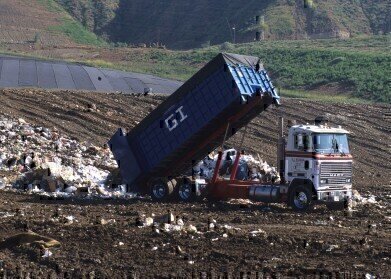Waste Management
What Pollution Do Landfill Sites Generate?
Jul 28 2021
For well over a century, the human race has relied on landfills to dispose of the waste that it produces on a daily basis. As a convenient and affordable method keeping urban epicentres clean, landfills were seen as the ideal way of dealing with a disagreeable issue. However, awareness over their long-term impacts on the environment has prompted a rethink over their viability and an emphasis on reducing, reusing and recycling the waste items that we would once have discarded without a second thought.
Today, it’s common knowledge that landfill sites generate all different types of contamination, including air, soil, water, noise and odour pollution. These can not only have a detrimental effect on the natural world, but also on the organisms (including humans!) which reside within it. Here’s a closer look at each of those types of pollution in isolation.
Air pollution
Over time, the waste in open landfill sites emits harmful gases into the atmosphere as it decays. These gases are mostly comprised of methane, carbon dioxide and volatile organic compounds (VOCs) which are produced as a consequence of allowing organic and non-organic matter to decompose. There have been particular concerns over global methane emissions, due to its role as a major greenhouse gas, its toxicity and its propensity to cause explosions when allowed to accumulate in high concentrations.
Soil pollution
When open landfill sites are exposed to extended periods of heavy rainfall, a thick, soup-like substance known as leachate can be created. This can infiltrate the soil surrounding the site and cause an imbalance in its nutritional composition, thus making it harder to cultivate crops or nurture animals which depend upon it. In turn, this harms the delicate ecosystems of the natural world.
Water pollution
Just as soil can become contaminated from run-off from landfill sites, so too can waterways. In particular, drinking water supplies must be thoroughly tested for those aforementioned VOCs, since an excessive concentration of these pollutants can make supplies unsafe for consumption. Meanwhile, the presence of bacteria, ammonia and phosphate in landfill sites can contribute to the growth of some aquatic species to the detriment of others.
Noise pollution
As mentioned above, methane is a highly explosive gas when it is permitted to accumulate in large quantities. At landfill sites, the decaying of organic matter can result in excessive amounts of methane in a single location, leading to unplanned explosions. These are not only dangerous to the animals and humans living and working in the vicinity of the landfill, but they can also exacerbate noise pollution concerns, which affect countless species’ ability to survive and thrive.
Odour pollution
There’s nothing quite as unpleasant as the stench of rotting garbage. It’s unsurprising, then, that the territory surrounding landfills is often plagued by an unpleasant odour which never dissipates. This can cause discomfort for those who live nearby and, if a landfill is located in an area which relies upon tourism for its economic stability, can even contribute to or exacerbate levels of poverty.
Events
IWA World Water Congress & Exhibition
Aug 11 2024 Toronto, Canada
Aug 25 2024 Stockholm, Sweden and online
Sep 03 2024 Mexico City, Mexico
Sep 03 2024 Mexico City, Mexico
Sep 03 2024 San Diego, CA, USA













